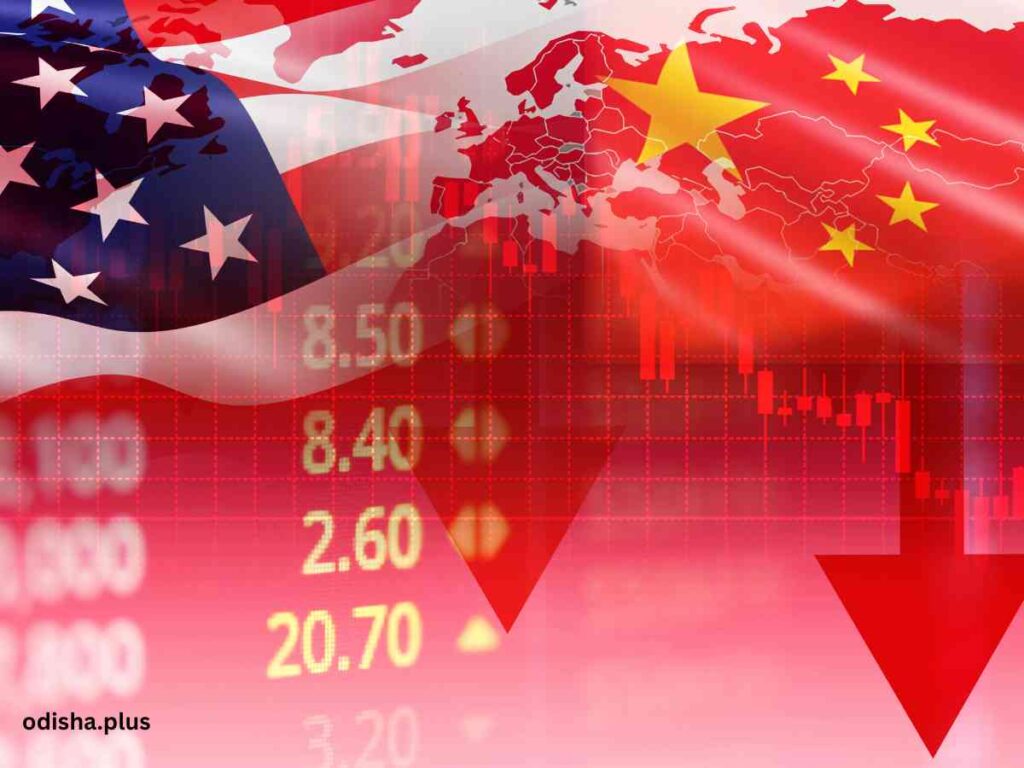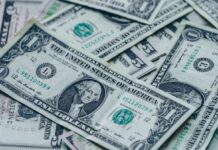Escalating trade tensions spark a global economic downturn, echoing the 1929 crash as countries engage in retaliatory tariffs amidst a retreat from globalization
Suresh Chandra Sarangi

Trade war is an abominable word in the context of globalization. While globalization professes the growing interdependence of the economies of the world, cultures, and populations that have pioneered and steered integration of the world, the recent development in the USA has been a powerful force to strike at the root of globalization. The free movement of capital and goods across borders seems to be taking a turn, if not a complete stop, in its long journey. The influence of technology, which was the cementing factor helping accelerate the growth of the world economy, suddenly came under the bulldozer of tariffs and sanctions.
In the book Bound Together, Nayan Chanda writes about how traders, preachers, adventurers, and warriors so assiduously built and shaped globalization. In the current context, globalization faces a walk through the fire, and Trump’s tariff to make America great again is not a gentle nudge but a powerful seismic shock that has jolted financial systems and markets. The volatility index is at the highest level, and the investors are panic-stricken.
China Retaliates
At the time of writing the article today, the 7th April, Japan’s Nikkei has shed 6.48%, the Hong Kong market has shed 9.40%, and the American market was rattled by a drop of 3831486, 5.50%, the Nasdaq 100 by 1123 points or 6.00% and standard and poor a whopping 322.44%. London index dropped by 4.95%, Paris by 4.26%, and Frankfurt by 4.95%. Last Friday, Sensex dropped 1.80% and Nifty by 1.49%. And the chain reaction continues unabated. Markets are behaving strangely as sharp reactions are visible after Trump’s Liberation Day declaration and China’s sharp and bold retaliation on the same day by imposing a 34%, reciprocal tariff on American exports.
With that masterstroke, the trade war has started in full swing, and nobody knows when the market will stabilize, economic growth will be positive, and the financial system will stabilize for the better. The Indian stock market started to crash, with the Indian Sensex dropping more than 4% at 9.21 a.m. just 5 minutes after the opening of the stock market, and Nifty was of the same order.
The glorious period of uncertainty has crashed, and the world economy, world trade, and investors is panic-stricken. The US market capitalization has almost nose-dived 5 trillion dollars. Some even expect that this would be a repeat of the great crash of 1929, which happened just after the First World War. Nothing is certain. These are guesses. Rumors abound. The sentiment is negative. It is too bad.
The world today has moved a long distance from camel commerce to e-commerce. It is so well-organized and so swift. Technology has given the world of finance an edge, and it appears possible. But how did it all happen? Before the second term, when electioneering was in full swing, Trump had bared his heart with his two policy postures, MAGA and DOGE. He was of a strong conviction that the entire world is charging too high an import duty when America is charging very low. This is at the height of trade-related discrimination.
During the electioneering debate, the Democratic candidate had criticized Trump’s economic policy and the much-hyped Reciprocal tariff as a wrong one, and 16 Nobel laureates had disowned that theory. But Trump is Trump, and he has to keep his election promise. Almost a month ago, Trump levied a huge reciprocal tariff on Mexico and Canada. As per his earlier declaration, to make April 2nd the liberation day for America, he declared tariffs on other countries that rattled the entire world.
Trump said in the Rose Garden that the American economy is bleeding because of other countries. His theory of reciprocal tariff would provide the American economy with a strong base, with growth around the corner and fabulous employment for the American people. The reciprocal tariff declared and effective from the 5th of April was varying from 10% to almost 50%. The customs duty on Indian goods would be 26%, on Chinese goods 34%, on Cambodia 49%, on Indonesia 32%, on Iran 39%, on Japan 24%, on Pakistan 29%, etc. European Union 20%.
Hitting Hard
As a result of the tariff, Americans will be hit the hardest. China, in retaliation, declared a 34% tariff on American exports. China has a 360-billion-dollar surplus in the balance of trade with America. They are not afraid. This had a devastating effect on the world stock market, which went topsy turvy, triggering a web of distressed sales and a fall of indices like that of a house of cards. Economists in America believed that by imposing this duty, foreign goods would be costlier, the average American would have to pay more, and that would tend to steer inflationary expectation and in the long term, it would be converted into a period of recession.
A research paper from Yale University’s budget lab has studied the effect of the reciprocal tariff and discovered that it will affect the rich the hardest, but the lower income group, nevertheless, would also suffer as all the products would be affected similarly. When it is seen that clothing and textile prices can ride up to 17%, groceries 3 to 4%, and vehicles at 8%, the highest effect would be on leather products at 18.3%, apparel at 16.9%, crops at 13.3%, and metals at 12.3%. Oxford Economics predicted that inflation could rise to 4% and that growth may be as low as 1.4%. The US Growth could come down to 1%.
With China’s retaliation trade war having already started, the WTO, which had so assiduously built a world trade infrastructure is crumbling, and no one knows how they can rescue the world from the present imbroglio. Trump has already withdrawn from the World Health Organization on the pretext that it is arbitrary against America in comparison with China’s population and contribution.
Trump has, for the second time, decided to withdraw from the Paris Climate Agreement. He has only one dream, how to make America great again. As a result of the ensuing trade war, world trade will be squeezed, globalization will come to a halt, and liberalization as a process will find a roadblock on its way.
This may lead to a de-dollarization process. The international politico economy would experience the greatest disturbances of all time. India is not in a hurry to retaliate, and Cooley, reading the developments, is in a watchful mood. But there is anger in other places in the world. Trump’s salvo had atomic power, and it is difficult to fathom. Trump is a bit liberal to India, and let us be hopeful that something positive will accrue.
Change Imminent
From a global perspective, the world will change a lot. Smaller economies and export-based economies like Vietnam and Bangladesh may suffer economic turbulence. Rule world trade appears to be entering into a phase of arbitrariness and protectionism. Organization and free trade, says Singapore’s prime minister, may be over with goodbye to the Bretton Woods system. The US, which championed a free market economy, and anchored the trading system at meet a roadblock.
It is said that the new reciprocal tariff system is a complete rejection of the WTO and its rule-based system. Consequences are profound. Some countries feel marginalized. The trade war may be full-blown. Global growth would slow until and unless the US rejigs its reciprocal tariff and China restructures its retaliatory reciprocal tariff; it may be a full-blown trade war. The trade war evolved and unfolded into the Second World War. World institutions like the WTO, the WHO, and the Paris Agreement are gradually eroding. There is disbelief and uncertainty in the air.
In the final analysis, the trade war is not good for any country. The poor and low-income groups would be at a loss. The investor world today is forlorn and resigned to its fate. Panic-stricken, he sees no hope. But hope floats. Let us believe that Trump and other world leaders will reconcile and reconstruct. Hope floats, and let us have faith in human ingenuity to overcome this impending financial crisis.
(The writer is a former General Manager of Bank of India and currently a visiting professor at KIIT School of Management. Views expressed are personal.)

























